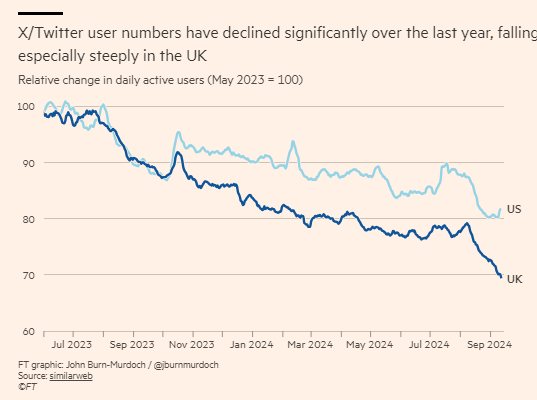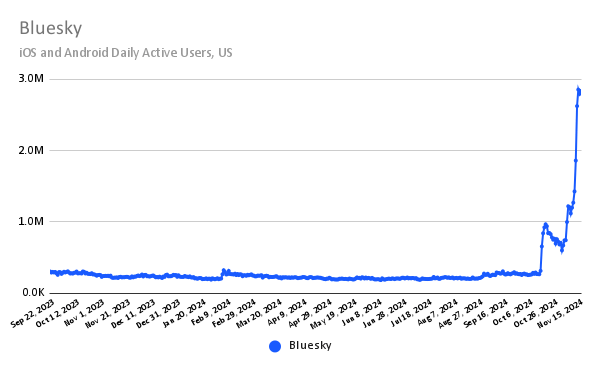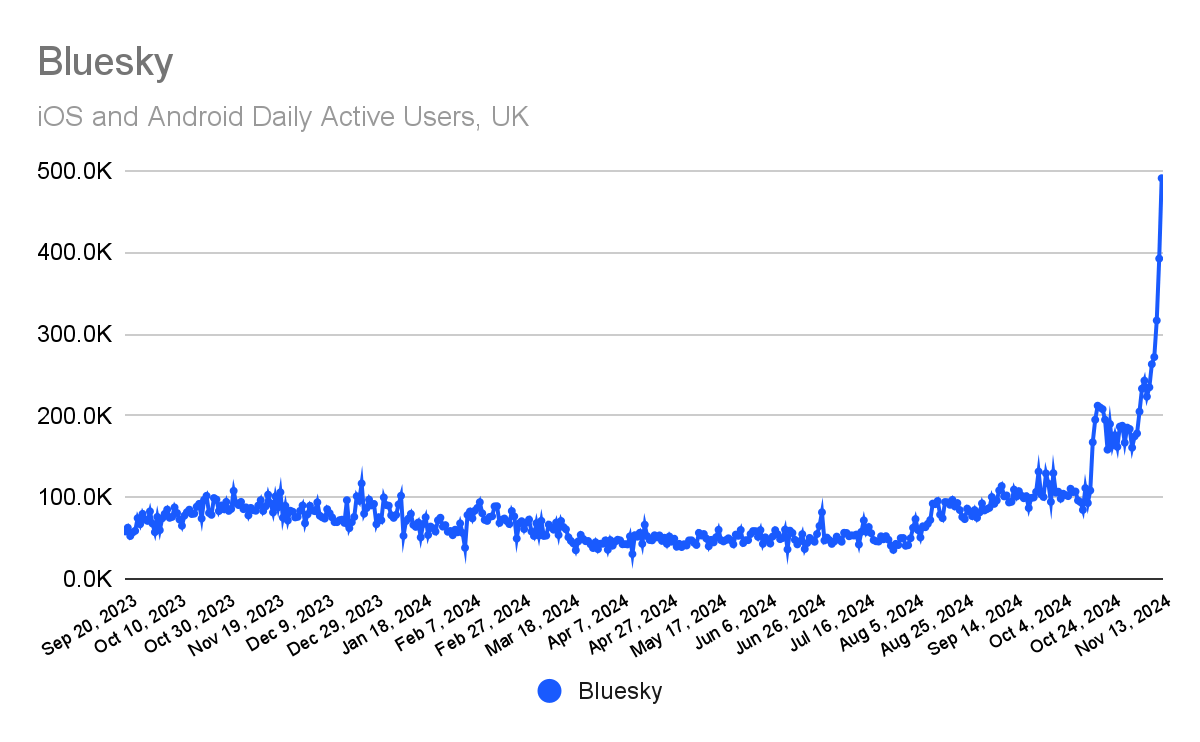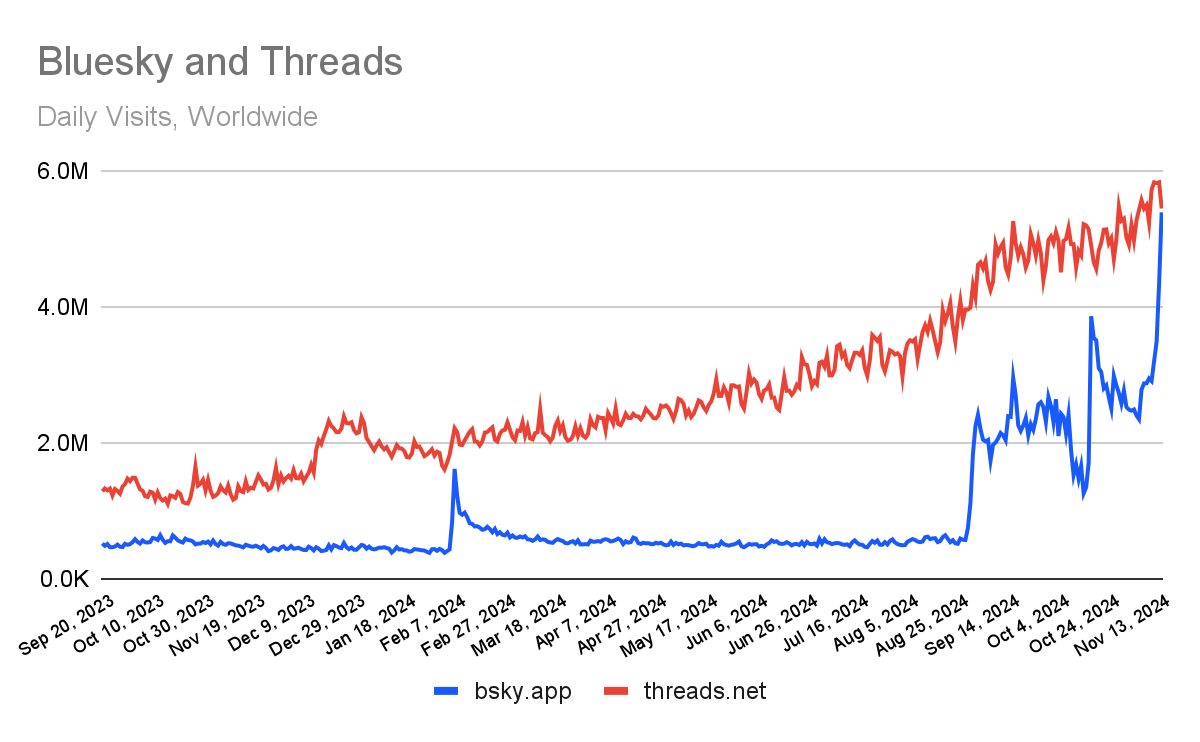A growing number of social media users seem to be on the hunt for alternatives to X (formerly Twitter).
Once the go-to platform for real-time conversations and breaking news, X’s transformation has sparked curiosity and controversy, leading to increased attention on new platforms like Threads and Bluesky. But what is driving this search for alternatives, and how do these emerging platforms stack up?
When Elon Musk purchased Twitter in October 2022 and rebranded it as X, “the everything app,” in July 2023, the platform underwent a series of dramatic changes that shifted its core identity. Under Musk’s leadership, characterised by bold and often polarising decisions, the platform has seen significant policy changes, the introduction of new features, and an overall restructured approach to content moderation and user engagement. These shifts have sparked debate, with some users embracing the changes as innovative while others question the platform’s future direction and their presence.
As users seek alternatives to X (formerly Twitter), new entrants like Threads and Bluesky have recently dominated discussions.
Bluesky, with a growing base of 20 million users, is gaining traction, appealing to those looking for a more open and community-driven platform. However, it still lags behind its larger competitors—Threads, which boasts 275 million users thanks to its integration with Instagram, and X itself, which remains the largest player in the space with 500 million users.
Threads
- Launched, July 2023
- Active users: 275 million (November 2024)
Threads is a social media platform owned by Meta. Threads has a similar look and feel to Twitter, but with an Instagram aesthetic. It is designed for text-based conversations. It quickly gained traction by leveraging Meta’s vast user base and is heavily promoted across Facebook and Instagram. Unlike other social media platforms, it does not yet have direct messaging functionality.
Bluesky
- Launched, October 2021 (invite only). February 2023 (on the iPhone App Store)
- Active users: 20 million (November 2024)
Bluesky is a decentralised social media platform created by former Twitter CEO Jack Dorsey (he has since left the start up board). It is now run and predominantly owned by chief executive Jay Graber as a US public benefit corporation.
Bluesky operates on an open-source protocol called the AT Protocol, which allows users to control their data and interact across different networks. As part of the Fediverse—a collection of decentralised platforms that communicate through shared protocols—Bluesky enables users to engage with others on different services that support compatible protocols.
To note, X and Threads are not part of the Fediverse, as they are centralised platforms controlled by their respective companies.
User Trends: Comparing X, Bluesky and Threads
According to Similarweb, and shown in the charts below, Twitter users have declined significantly over the past year. Bluesky usage has surged an estimated in the US, while it’s also seen a jump in daily active users in the UK. Use of Worldwide, use of Threads continues to grow and the gap is beginning to close.

Source: FT graphic. Similarweb X/Twitter user numbers have declined significantly over the last year.

Blueky iOS and Android Daily Active Users, US
Source: Similarweb

Bluesky iOS and Android Daily Active Users, UK Source: Similarweb

Bluesky iOS and Android Daily Active Users, US Source: Similarweb
The Exodus of High-Profile Accounts from X
High-profile accounts, including brands, charities, public sector entities and major media outlets, have announced their departure from X, further fuelling discussions about the platform’s evolving direction and its appeal to both users and content creators.
In August 2024, the Race Equality Foundation announced its decision to leave X in response to the platform’s “role in amplifying disinformation, particularly in relation to the recent unrest in Southport and the north of England”.
On 12 November 2024, The Guardian announced their intention to stop posting from official editorial accounts. This article highlights the rationale behind their decision and their next steps:
“The benefits of being on X are now outweighed by the negatives and that resources could be better used promoting our journalism elsewhere.”
“X users will still be able to share our articles, and the nature of live news reporting means we will still occasionally embed content from X within our article pages. Our reporters will also be able to carry on using the site for news-gathering purposes, just as they use other social networks in which we do not officially engage. Social media can be an important tool for news organisations and help us to reach new audiences but, at this point, X now plays a diminished role in promoting our work. Our journalism is available and open to all on our website and we would prefer people to come to theguardian.com and support our work there.”
How to Make Informed Social Media Decisions
Making informed decisions about which social media platforms to join or leave involves careful consideration of several factors, from user demographics and platform features to long-term sustainability and alignment with your goals. By evaluating each platform’s relevance to your personal or business strategy, understanding your target audience, and staying updated on platform changes, you can make choices that are thoughtful and aligned with your values.
- Evaluate Your Audience
-
- Where Your Target Audience Is: Research which platforms your target audience use most frequently, and focus on maintaining a presence there.
- Personal accounts: Consider how leaving or joining a platform affects your personal connections and followers.
- Corporate accounts: Assess the impact on brand visibility, customer engagement, and audience trust when leaving or joining a platform.
- Consider Competitors
-
- Analyse if your competitors are active on the platform and whether leaving or joining could affect your competitive position.
- Explore if newer platforms could offer better engagement opportunities.
- Consider Your Available Resources
- Time and Skillset: Evaluate whether you have the time, team, or skills to effectively manage additional social media accounts. Spreading yourself too thin across platforms can reduce engagement and effectiveness.
- Key Points of Concern
-
- AI and Data Usage: Review how platforms use your data, including AI training and algorithm refinement, and the implications for privacy.
- Data Privacy: Understand platform policies on data collection, sharing, and how it may affect you or your company.
Tips for Exploring New Platforms such as Threads and Bluesky
When exploring new platforms like Threads and Bluesky, it’s important to take a thoughtful, low-pressure approach, observing how the platform operates and whether it aligns with your personal or business goals before fully committing.
Assess Privacy and Data Policies
- Review the privacy policies of each platform, especially around data collection and usage. Make sure you’re comfortable with how your information will be handled.
Threads terms of use: https://help.instagram.com/769983657850450
Bluesky terms of service: https://bsky.social/about/support/tos
Set Up an Account and Observe
- Create an account to explore the platform without the pressure to post. It’s perfectly fine to “lurk” and simply observe how others are interacting. It can also be useful to ‘reserve’ the account name you wish to use.
Monitor Content and Interactions
- Spend some time looking at the type of content being shared, the tone of conversations, and the engagement patterns to see if the platform aligns with your interests or business needs.
Evaluate the User Interface
- Take note of how easy it is to navigate and whether the platform’s features are intuitive. A user-friendly experience is key to deciding if you want to invest more time there.
- Consider how you will manage the platform. If it’s new, it may not integrate with third-party tools you currently use for scheduling, analytics, or content management, which could impact your workflow and time commitment.
Check for Relevant Communities
- Look for communities, groups, or influencers in your niche. Are people you admire or competitors active on the platform? This can give valuable insight into the potential value of joining.
On Threads, you can quickly set up your account by following the same people you already follow on Instagram, making it easier to find relevant communities and get started.
Bluesky and its user and developer communities have been actively encouraging the transition with mechanisms such as Starter Packs of recommended users to follow (searchable via blueskydirectory.com) and a Chrome extension that helps automatically map the accounts a user follows on X to their new home on Bluesky.
Don’t Feel Pressured to Post Immediately
- If you’re unsure, take your time. There’s no need to dive into posting right away. Simply having an account can give you valuable insight into the platform’s fit for you.
Monitor Content and Interactions
- Spend some time looking at the type of content being shared, the tone of conversations, and the engagement patterns to see if the platform aligns with your interests or business needs.
Experiment with Limited Engagement
- If you’re on the fence, try limited engagement—like liking posts or following accounts—before deciding to post your own content. This allows you to get a feel for the platform’s vibe without committing fully.
How to Leave a Social Media Platform
If you decide to leave a social platform, do so in an organised and intentional way, ensuring you maintain control over your data and connections.
- Decide on Your Exit Approach:
- Determine whether you want to deactivate your account permanently or simply pause your activity. Deactivation removes your profile from public view, while pausing allows you to step away temporarily without losing access.
- Download Your Data:
- Before making any changes, ensure you have a backup of your important content. Most platforms allow you to download your data, including posts, photos, messages, and other activity.
Here’s how to access your X data: https://help.x.com/en/managing-your-account/accessing-your-x-data
- Inform Your Followers:
- If you’re leaving the platform, consider posting and pinning the message to let your followers know.
- Share where they can reach you in the future—this could include other platforms, a website, or email.
- Update Your Bio:
- Use your bio to reflect your decision to leave or pause your activity. For example, add a note like “No longer active here” and to redirect people to alternative channels where they can stay connected with you.
What to Do After Making Your Decision: Next Steps for Implementation
Once you’ve made your decision about leaving, joining, or focusing on a social media platform, it’s time to take action to ensure alignment with your organisation’s values and strategy.
- Guiding Individuals in Your Organisation
-
- Ensure employees understand how their personal platform decisions can reflect on the organisation’s values, goals, and digital strategy.
- Update Your Social Media Policy
-
- Establish clear guidelines on leaving or joining platforms, addressing data privacy, account management, and social media usage in alignment with corporate objectives.
- Update Marketing Assets
- You may need to add/remove social media icons and links from website footers, email signatures etc.
Closing Thoughts: Navigating the Evolving Social Media Landscape
A positive outcome of the recent changes in social media is that they have prompted users to critically assess their relationship with X and other platforms. Many are stepping back to re-evaluate how they engage online, breaking away from the “what we have always done” mindset and exploring more intentional, mindful ways to connect. This shift is no bad thing—in fact, it’s a healthy response to a rapidly changing digital landscape.
While new platforms like Threads and Bluesky are attracting attention, it remains to be seen whether they can truly replace X or simply contribute to a broader evolution of social media.
We’ve seen similar excitement in the past: in early 2021, Clubhouse surged from 600,000 to 2 million users in just four weeks. Its innovative audio-only format sparked copycat features on platforms like X and LinkedIn, though LinkedIn has since folded its audio offering into its broader live events feature.
Being an early adopter on new platforms can offer distinct advantages, such as securing a unique position within growing communities, gaining visibility, and shaping the platform’s culture and features before they become mainstream.
However, user numbers should not be the sole factor in deciding whether to use a platform. Consider the type of engagement it offers, the relevance of the community, and whether it aligns with your broader goals and values.
As platforms continue to evolve, it’s essential to stay informed about changes, updates, and new features that could make them more appealing or better suited to your needs.
Additionally, consider doubling down on your use of existing platforms like Facebook, Instagram, or LinkedIn if they are already meeting your needs and align with your goals and objectives.
Keep an eye out for updates – subscribe to my weekly email newsletter and join the monthly live event where we discuss all of the latest data, insights and platform changes.

